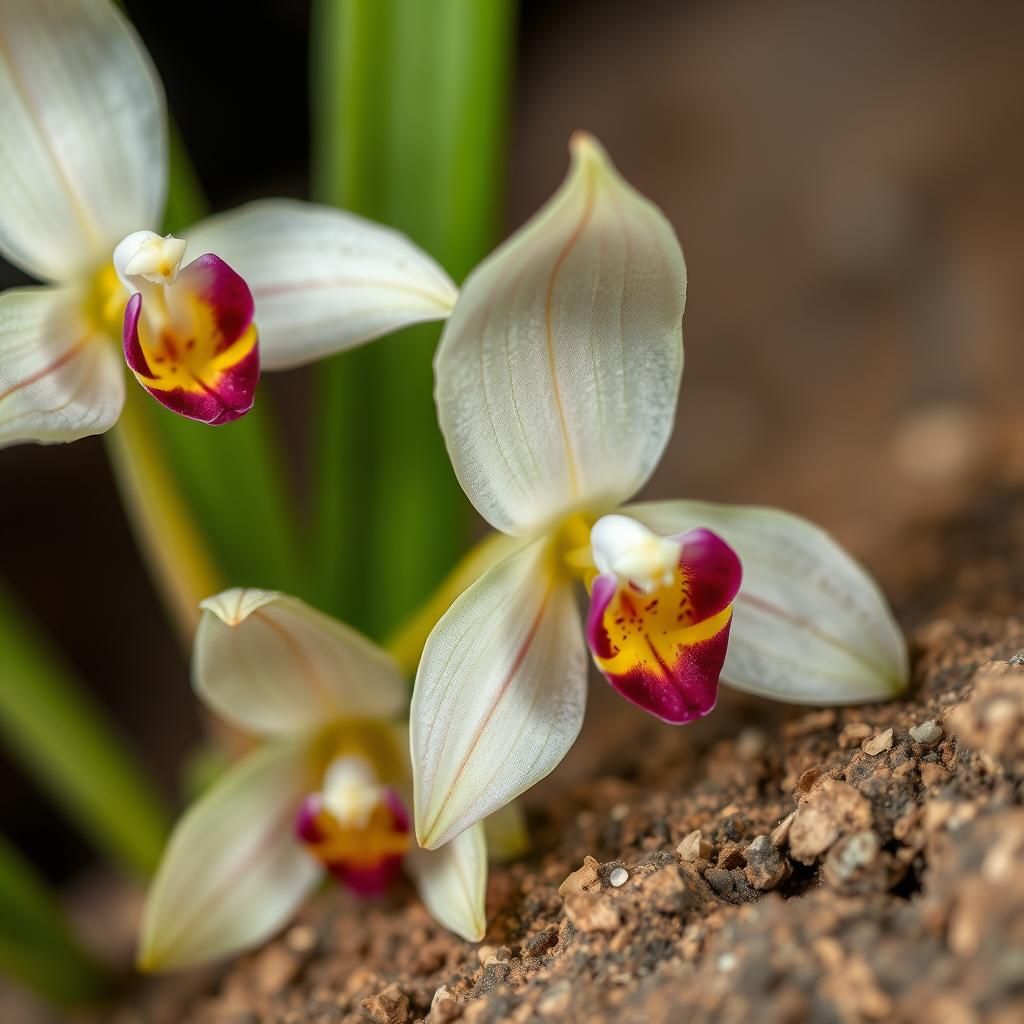Discovering the Beauty of Australian Native Rock Orchids: Care Tips and Growing Guide

Australia is home to an incredible diversity of flora, among which native rock orchids stand out for their stunning beauty and unique adaptations. These resilient plants thrive in some of the most challenging environments, showcasing a remarkable ability to capture the essence of the Australian landscape. In this article, we will explore the enchanting world of Australian native rock orchids, offering valuable care tips and a comprehensive growing guide to help you successfully cultivate these extraordinary specimens in your own garden. Discover how to appreciate their elegance while ensuring they flourish in your unique outdoor space.
Australian Native Rock Orchids: A Unique Botanical Heritage
Australian native rock orchids, belonging to the genus Dendrobium, are exceptionally adapted to their native habitats, often thriving in the challenging environments of rocky cliffs and sandstone outcrops. These hardy orchids exhibit a remarkable resilience against drought and extreme temperature variations, which allows them to flourish in the unique ecosystems of Australia. The diverse species of rock orchids showcase stunning floral displays that attract various pollinators, including bees and butterflies, contributing to their ecological significance. Their attractive flowers range in color from vibrant purples and whites to soft pinks, making them not only important for biodiversity but also appealing to orchid enthusiasts and gardeners alike.
Habitat and Distribution
The habitat of Australian native rock orchids primarily includes rocky terrains, such as cliffs, rocky outcrops, and forest edges, where they often grow in crevices or on tree trunks. These orchids are predominantly found across the eastern regions of Australia, including Queensland, New South Wales, and Victoria. The specific microclimates created by their rocky surroundings provide essential resources, such as sunlight and moisture, allowing these species to thrive. Consequently, understanding their distribution is crucial for conservation efforts and to appreciate their role within Australia's unique flora.
Botanical Characteristics
Australian native rock orchids are characterized by their unique morphological features, including thick, fleshy leaves that store water, enabling them to survive in arid conditions. The flowers typically have a distinctive structure, with many having a lip that serves as a landing platform for pollinators. Their flowering season usually coincides with specific climatic conditions, which enhances their reproduction and survival. The diversity in floral shape and size among different species provides insight into their evolutionary adaptations to varying environmental challenges.
Conservation Efforts
Due to habitat loss and environmental changes, conservation efforts for Australian native rock orchids have become increasingly important. Many species are classified as vulnerable, prompting initiatives aimed at habitat preservation and restoration. Conservation programs often involve protecting existing populations, restoring damaged ecosystems, and cultivating orchids in nurseries for reintroduction into the wild. Collaborative efforts among government bodies, local communities, and conservation organizations are essential to ensure the ongoing survival of these remarkable orchids and their natural habitats.
See also:
Growing Australian Native Rock Orchids
Cultivating Australian native rock orchids in gardens or as houseplants can be a rewarding experience, provided that proper care is taken. These orchids prefer well-draining conditions, often thriving in rocky mixes that replicate their natural environment. They require partial shade, high humidity, and regular watering during the growing season, although they should dry out between waterings to prevent root rot. Gardeners can appreciate the beauty of these orchids while contributing to their conservation by ensuring that they are sourced from ethically responsible nurseries.
Cultural Significance
The cultural significance of Australian native rock orchids extends beyond their aesthetic appeal; they hold traditional importance for Indigenous Australian communities. Many Aboriginal groups regard these orchids not only for their beauty but also for their associated spiritual and medicinal properties. The knowledge of these plants has been passed down through generations, highlighting their integral role in cultural practices and the understanding of the Australian landscape. Their presence in traditional stories and art forms emphasizes the deep connection between these orchids and the broader ecological and cultural heritage of Australia.
| Feature | Description |
|---|---|
| Habitat | Rocky cliffs and outcrops |
| Distribution | Eastern regions of Australia |
| Flower Colors | Vibrant purples, whites, and soft pinks |
| Conservation Status | Vulnerable species |
| Care Requirements | Well-draining soil, partial shade, and humidity |
Cultivating Thriving Australian Native Rock Orchids in Your Home
To successfully cultivate Australian Native Rock Orchids, it's essential to understand their specific environmental needs and growing conditions. These orchids thrive in well-draining soil that mimics their natural habitat, which typically consists of rocky outcrops and gravelly substrates. Providing adequate light, preferably indirect sunlight, is crucial for their photosynthesis while avoiding excessive heat. Regular watering is necessary, but care must be taken to prevent waterlogging, as these orchids are susceptible to root rot. A routine of applying a balanced orchid fertilizer during their active growth period can also enhance their health and blooming potential.
Understanding the Natural Habitat of Rock Orchids
Australian Native Rock Orchids are often found in clifftops and rocky terrains, illustrating their resilience to harsh conditions. Their natural habitat influences their growth patterns, making it vital for growers to replicate such environments. The cool temperatures and moderate humidity levels in their native areas contribute to their thriving developments, thus gardeners should aim to create conditions that mimic these settings when cultivating them at home.
Essential Care Tips for Rock Orchids
Providing the right care for Australian Native Rock Orchids involves a few critical practices. While these orchids prefer a semi-shade environment, they still require consistent exposure to light. Moisture levels should be balanced; they thrive in humid conditions but dislike saturated soil. Regular checks for pests and ensuring good air circulation can prevent diseases. Moreover, repotting every few years can refresh the growing medium, ensuring the plant has enough room for root development.
See also:
Common Pests and Diseases in Rock Orchids
Like many orchids, Australian Native Rock Orchids are prone to various pests and diseases. Common pests include aphids, mealybugs, and spider mites. These can be identified by their damage to the orchid's leaves or by the presence of webbing. Preventative measures include regular inspection and using insecticidal soap when necessary. Diseases such as crown rot may occur if plants are overwatered, stressing the importance of adequate drainage and watering practices.
Propagation Techniques for Rock Orchids
Propagation of Australian Native Rock Orchids can be achieved through division or tissue culture. Division involves carefully separating the plant's rhizomes during repotting to create new specimens. Tissue culture, while more complex, allows for the creation of clones that maintain the characteristics of the parent plant. Both methods require proper techniques to minimize stress on the plants, ensuring a higher survival rate of the newly propagated orchids.
Seasonal Considerations for Growing Rock Orchids
Growing Australian Native Rock Orchids successfully requires an understanding of seasonal changes. During the growing season in spring and summer, these orchids benefit from increased light and regular feeding, promoting healthy growth and vibrant blooms. In contrast, during the dormant season in autumn and winter, it's important to reduce watering and fertilization. These seasonal variations reflect the plant's natural lifecycle, allowing growers to align their care practices with the orchids' needs.
Questions from Our Readers
What are Australian native rock orchids?
Australian native rock orchids are epiphytic and terrestrial plants that belong to the Dendrobium genus. They are primarily found in Australia and are known for their stunning flowers and ability to thrive in rocky or grassy environments. These orchids can be identified by their unique growth habits and vibrant colors, showcasing Australia's rich floral diversity.
How do I care for Australian native rock orchids?
Caring for Australian native rock orchids involves providing them with the right balance of light, humidity, and water. They thrive in bright, indirect sunlight and prefer a well-draining potting mix. It's essential to maintain a moderate level of humidity and water them sparingly, allowing the mix to dry out slightly between waterings, to prevent root rot.
See also:
When do Australian native rock orchids bloom?
Australian native rock orchids typically bloom during the spring to summer months, though the exact timing can vary by species and local climate conditions. When provided with optimal care, such as adequate light and temperature, these orchids can produce beautiful flowers that last several weeks, adding color to any garden or indoor space.
Are Australian native rock orchids easy to grow?
While Australian native rock orchids can be somewhat challenging to cultivate, they are relatively easy for experienced gardeners. They require specific conditions, such as well-drained soil and suitable light, to thrive. With the right knowledge and care, these stunning orchids can be a rewarding addition to any plant collection.

If you want to read more articles like Discovering the Beauty of Australian Native Rock Orchids: Care Tips and Growing Guide, we recommend you check out our Landscaping category.
Leave a Reply
Related Articles